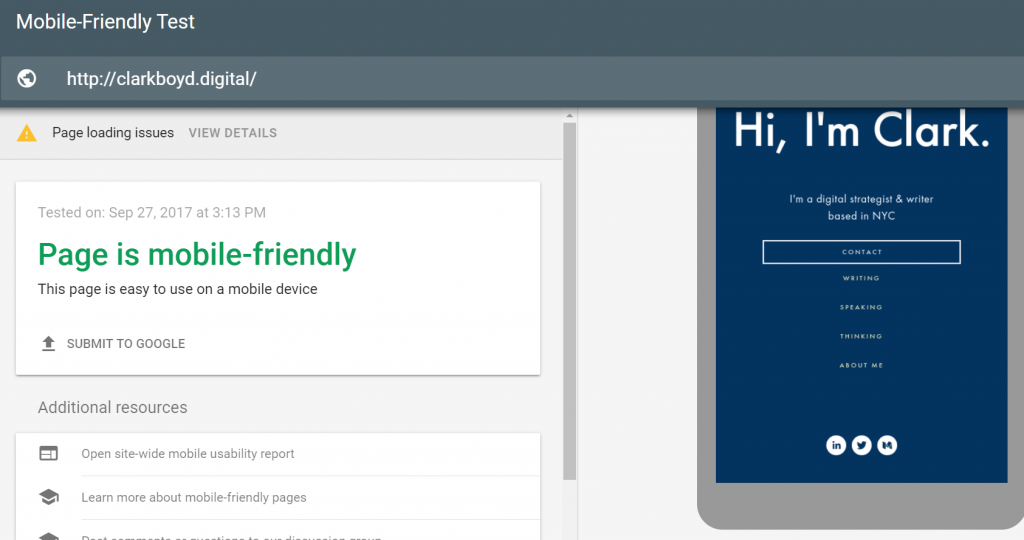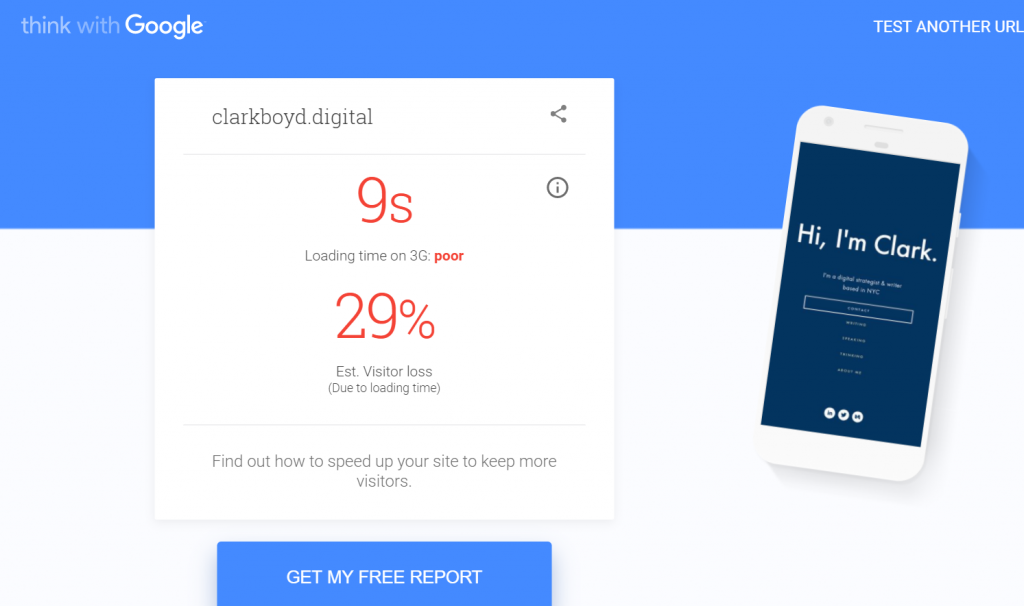Search marketers rely on tools to make sense of what it is a very complex, fluid environment. With the increasing importance of mobile, the list of tools grows even longer. Which platforms should search marketers use to devise a mobile-first SEO strategy?
While we await the launch of Google’s mobile-first index, search marketers are aiming to capitalize on the growing quantity of searches made on smartphones.
We spent a long time anticipating the ‘mobile era’, but for many businesses it has been a reality for some time now.
The numbers certainly tell their own story. Mobile searches now outnumber desktop queries, and mobile advertising spend is projected to exceed $100 billion worldwide this year.

(Source: Statista)
Of course, this means that the ranking signals for mobile are different to those used for desktop results. That stands to reason; smartphones are used for different purposes and they provide Google with different data sets to calculate its rankings.
Mobile websites often differ from their desktop counterparts too, so marketers need to be sure that their online presence is prepared for a mobile-first world.
Recently, we wrote that there are three areas that really matter for mobile SEO performance:
- Context: How many people search for your products online? When and where do they tend to search?
- Speed/accessibility: How quickly does your mobile site load? Are there differences in the internal linking structures of your mobile and desktop sites?
- User engagement signals: How well does your site render on a mobile device? Are you tracking the right metrics for mobile performance?
These are complex questions, but there some tools that can help us arrive at quantitative answers. The list below highlights 5 of the best tools to shape and measure your mobile SEO strategy.
SimilarWeb
For on-the-spot digital consumer research, SimilarWeb is a fantastic place to start. SEO does not exist in isolation, so it is very helpful to have an overview of how consumers are discovering a website across all channels and devices before we zoom in.
SimilarWeb uses proprietary, anonymized data from its own customers along with clickstream data to understand how people access sites, how long they stay, and where they go next.
This ecosystem incorporates apps too, which are of prime importance as we consider a mobile-first strategy. The mobile web is merging with the app world, with Google pushing both progressive web apps and Android Instant Apps.
SimilarWeb is excellent for competitor research too, making it a great all-rounder for any digital marketer as they start plotting a mobile strategy.
How SimilarWeb can help shape your mobile-first SEO strategy:
- Consumer insights across all channels, devices and territories
- Helpful for mobile SEO keyword research
- Includes app analysis alongside mobile web statistics
- In-depth competitor analysis reveals other sites’ strengths and weaknesses
SEMrush
SEMrush packs in an impressive amount of features for both organic and paid search. Most importantly for the scope of this analysis, it contains a host of mobile-specific SEO charts and graphs that provide insight into any website’s performance.
By identifying the frequency with which a website shows up within their index of search results, SEMrush provides an overview of the mobile rankings and traffic a brand receives. This serves as a useful barometer of current performance, and the competitor analysis features provide further reference points.

The new Sensor feature (in BETA) monitors search results page fluctuations across devices, in a welcome development that reflects the constant flux of ranking positions in 2017.
Too many rankings platforms provide a static position on a weekly basis and, while it would be impossible to measure the true volatility of rankings, this new feature from SEMrush is at least a step in the right direction.
Users can set this up to monitor specific keywords for both mobile and desktop, and it will provide a daily update on the differences noted across the relevant results sets.  SEMrush’s focus on both organic and PPC provides a more holistic overview of search results pages, too. This combination of functionalities puts it just ahead of its competitors, which include BrightEdge, SearchMetrics, and SEO Monitor, for mobile SEO research.
SEMrush’s focus on both organic and PPC provides a more holistic overview of search results pages, too. This combination of functionalities puts it just ahead of its competitors, which include BrightEdge, SearchMetrics, and SEO Monitor, for mobile SEO research.
How SEMrush can help shape your mobile-first SEO strategy:
- Identify target keyword groups
- Track keyword performance over time
- Analyze competitors
- Monitor SERP volatility
- Overview of both paid and organic search performance
Google Mobile Site Tests
Google’s mobile-friendly test tool was launched with the aim of helping site owners get their house in order for the mobile age.
Users can enter a URL into the test, which will then tell them if their site is fit for purpose when rendered on a smartphone:
The mobile-friendly test creates a list of the issues found in loading the page, which can be assessed and addressed with the web development team.
Site owners have had plenty of warning and plenty of time to align themselves with Google’s mobile-friendly guidelines, so the next priority is speed. This has been no secret, with initiatives like Accelerated Mobile Pages making it abundantly clear where site owners should be placing their focus.
Google provides another essential resource to support marketers’ efforts with its site speed test, which has improved quite significantly this year. What had previously been quite a rudimentary tool that returned vague platitudes about “Compressing images” is now a much more sophisticated and thorough analytical tool.
Tests are performed using a simulated 3G connection to mimic the majority of global smartphone traffic today and Google even estimates how much traffic a site is losing due to slow loading times.
The free report can be emailed to a user (it usually arrives within an hour), with plenty of actionable details to help improve performance.
Given the paucity of great mobile-specific web tools out there, it really is an essential guide for search marketers aiming to get their site in line for the mobile-first index.
How Google’s Mobile Site Tests can help shape your mobile-first SEO strategy:
- Quick snapshot of any mobile site issues
- The estimate of lost traffic is great for demonstrating to senior leaders how important mobile SEO is
- Option to download a detailed, free report
- Clear, actionable tips to improve site speed
- New competitor analysis shows how you fare against the industry standard
Screaming Frog
Screaming Frog is a technical SEO analysis tool that will quickly crawl and analyze a website across a range of important factors. For a snapshot of site-wide adherence to Google best practices, it remains a central part of any SEO’s toolkit.
From a mobile perspective, these technical factors are of great significance. Many sites are rendered slightly differently depending on the user agent, so marketers need to be aware of what these differences are for their URLs. As we move to a mobile-first index, those differences could affect vital ranking positions.
In particular, elements including internal links, multimedia assets, and structured data may differ when rendered on mobile versus desktop.
Screaming Frog provides some valuable insight into these factors, along with standard SEO considerations like meta descriptions and title tags.
For enterprise-level businesses, Botify and DeepCrawl are great paid solutions for ongoing technical SEO. However, for smaller sites or one-off spot audits, Screaming Frog remains the go-to tool.
How Screaming Frog can help shape your mobile-first SEO strategy:
- A quick and effective way to analyze technical SEO performance
- Can help identify areas that are holding back site performance
- Some visualizations of issues such as overly long meta descriptions
- Very useful for a site-wide look at mobile SEO elements
Google Analytics; Google Search Console
I am cheating a little bit here to squeeze these two into the list, but they are complementary and pretty important for any mobile-first SEO strategy.
Google Analytics allows users to filter their data by device and by channel, making it very easy to isolate mobile SEO performance data. This can be compared to desktop and to other channels to see how SEO fares. Given the growing impact of user engagement signals on SEO rankings, marketers should really be focused on ensuring their content is meeting user demand. The metrics in Google Analytics provide the ideal starting point for this assessment.
It is possible that sub-par mobile SEO performance is related to lower rankings on mobile devices, which is where Search Console can start to prove its worth.
Google Search Console provides some good insight into mobile search volumes (found in the Impressions column), along with the ranking positions for each query.
Search Console is far from the full package for SEO, but we should expect Google to add more and more new features as the industry changes. In particular, I would anticipate the release of more mobile- and voice-specific filters to reflect the changing landscape.
The Page Analytics Chrome extension is the perfect complement to these, allowing users to analyze user interactions at a page level while browsing their own site. As we continue to see the convergence of UX, CRO and SEO, these considerations should be foremost for anyone aiming to create a mobile-first strategy.
And to add one more Google tool in and complete the set, Data Studio is a user-friendly way to create mobile-specific performance dashboards using metrics from a range of analytics platforms. Once a mobile strategy has been devised and implemented, these Google tools will allow SEOs to monitor the impact closely.
How GA and GSC can help shape your mobile-first SEO strategy:
- Accurate reflection of session-level interactions with a mobile site
- Insight into mobile search volumes and ranking positions
- Clear comparison with performance on other channels and devices
- Great way to track performance for core business metrics.
source https://searchenginewatch.com/2017/10/03/the-5-best-tools-to-develop-a-mobile-first-seo-strategy/





No comments:
Post a Comment